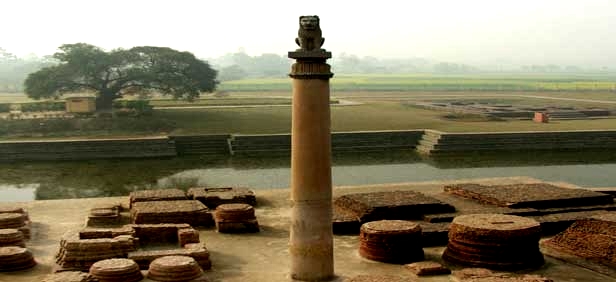With gradual optimism being felt on multiple fronts in terms of governance at the national level, Bihar might be staring at a future full of gloom and darkness. The threat of the state being pushed back by another decade is increasingly becoming potent and realizable.
Fifteen years of misrule by the lantern-bearer resulted in an unprecedented level of migration of students and manpower in search of better educational and employment opportunities.
The purpose of this essay is not to instigate a phobia or to create frenzy but to galvanize a realization that Bihar too can grow and contribute in the process of national resurgence and development under the visionary leadership of Prime Minister Narendra Modi. However, raking up ghosts from the past has become extremely significant in light of the recent political events and in the interest of the state.
The brazen marriage of convenience and opportunism in Bihar is going to have long-term ramifications on the socio-economic and political health of the already beleaguered state.
Over a month ago, the nation was remembering the excesses of the Emergency on its 40th anniversary that produced a galaxy of leadership aspiring to struggle for the eternal ethos, values of democracy and collective leadership.
The pivot of the anti-emergency movement has again attracted national attention by the coming together of LP (Laloo Prasad) and NK (Nitish Kumar).
Murder, rapes, abduction and extortion-killings were the common adjectives conspicuous in the daily newspapers of the state during the one and a half decade rule of LP. Caste based violence; atrocities and lawlessness prevailed in the rural hinterland of the state. The economic growth was halted by the despotic regime of the LP government.
Ranvir Sena and MCC casually disrupted the peace and stability in the central region of the state. The middle class in the urban centers was largely terrified to send their children to school and colleges.
Given this dark and terrifying, documented past, it is better to be cautioned of any such future nightmare however hypothetical it may be.
Remembering my teenage days in Patna, I recollect often coming across stories of kidnapping of my fellow-classmates and extortion killing from the business families. The rural-urban landscape burnt equally and suffered during this period while the Yadav clan and hooliganism flourished under the rule of Lalu Prasad.
The entire narrative of Bihar shifted tremendously from that of the historical legacies of Nalanda and Vaishali to Bathani-Tola and Jahanabad (notoriously remembered for caste-based killings during Lalu’s tenure).
Looking at the statistics under a post-split state government, crime is back with vengeance in Bihar. The Janta combine has the objective to resuscitate their old fort of infamy.
The dream of Bihar is not different from the ‘Great Indian Dream’; it is nothing very unique and specific. Good governance, development, economic growth and social justice coupled with the immense potential and aspirations of the youth are sufficient to pull Bihar out of years of inertia and negativity.
As a person hailing from the state, I am not embarrassed to acknowledge the pains, which a normal student from Bihar faces in an alien institution in the north and south of India: name-calling is often attributed as a customary practice.
The young people of Bihar like the rest of India are truly aspirational, aspirations transcending caste and communal rhetoric. Bihar needs institutes with professional courses; skill-development programs and a robust network of ITI’s and entrepreneurial support networks and not outdated affiliations of caste and clergy.
Prime Minster Modi’s announcement of a special package for Bihar from Saharsha, in the northern region of the state will hugely dent the morale of the ruling dispensation in Patna. The overwhelming sense of optimism is palpable every time the PM addresses a gathering in Bihar.
However, the battle of perception over realism should not triumph as being felt by the humdrum of the Opposition’s campaign. The maladies of the state need to be addressed through thought-provoking interventions by the central and the future state government.
A sustainable growth paradigm and coordination between like-thinking governments will be a great source of potential for the otherwise economically docile Eastern corridor.
The author is pursuing his Ph.D. in Law from the University of Delhi on Article 370 of the Constitution of India and writes on socio-political issues.

